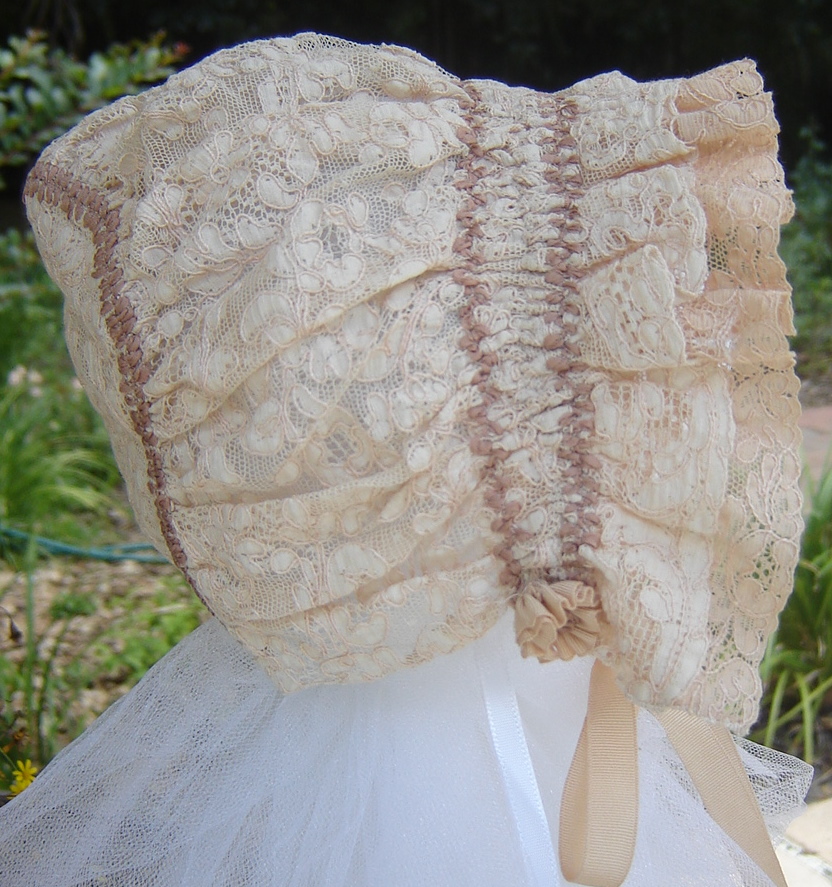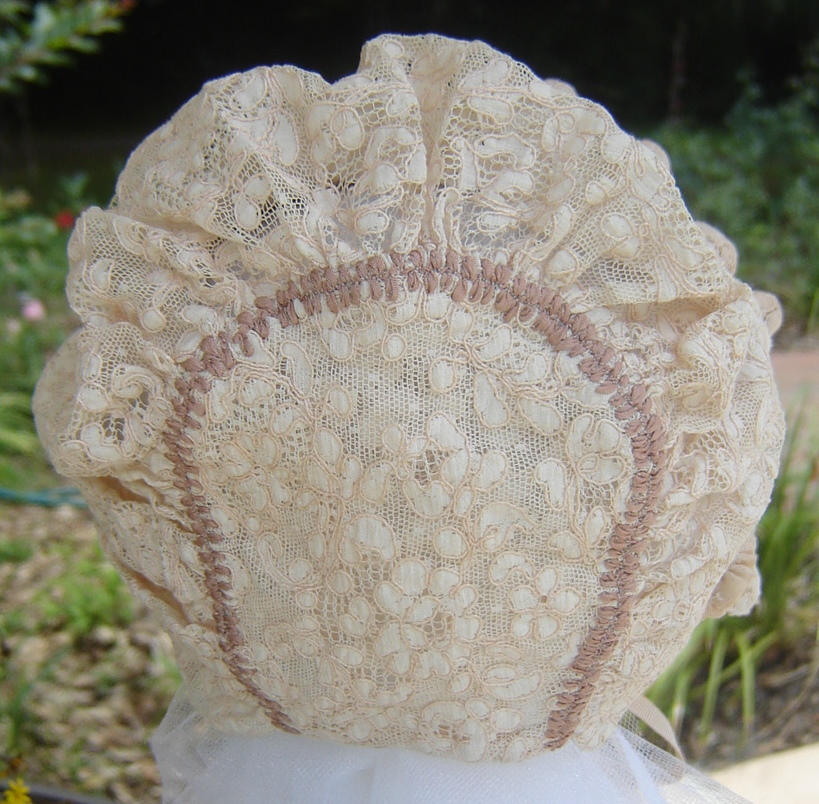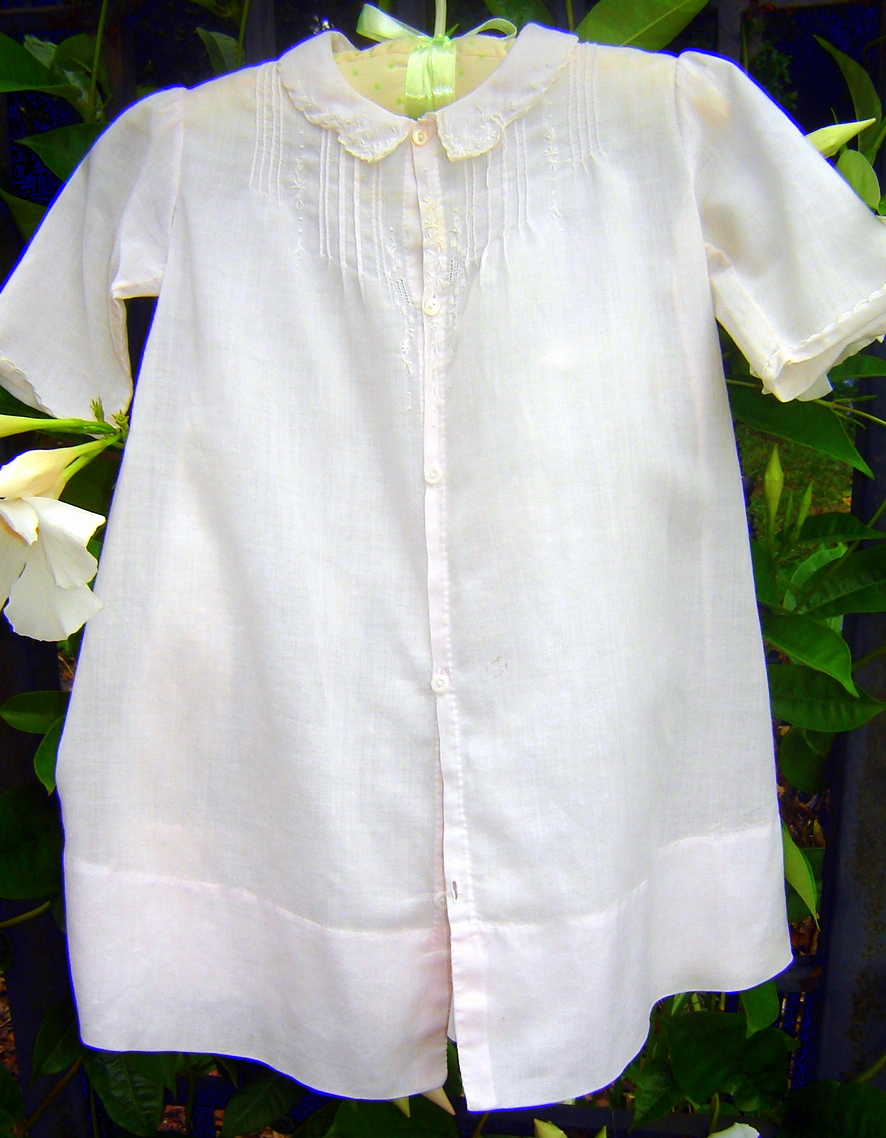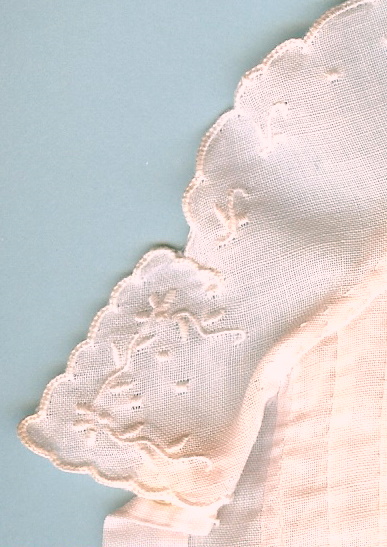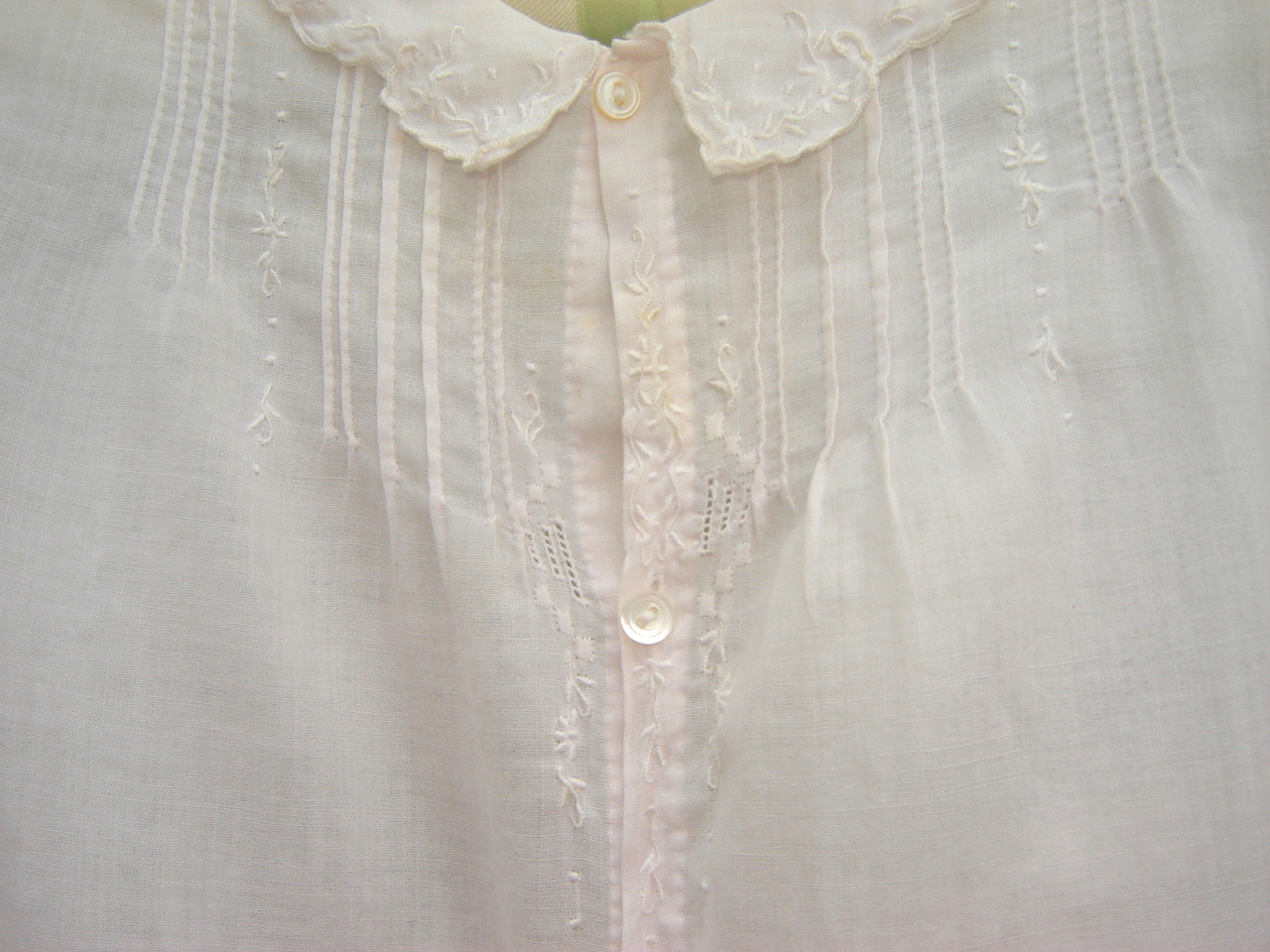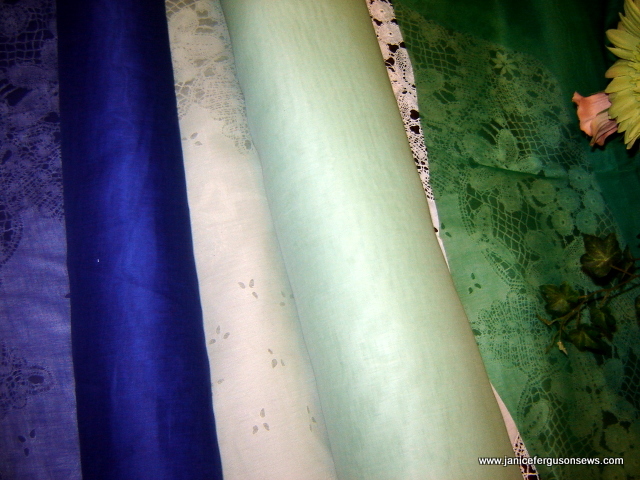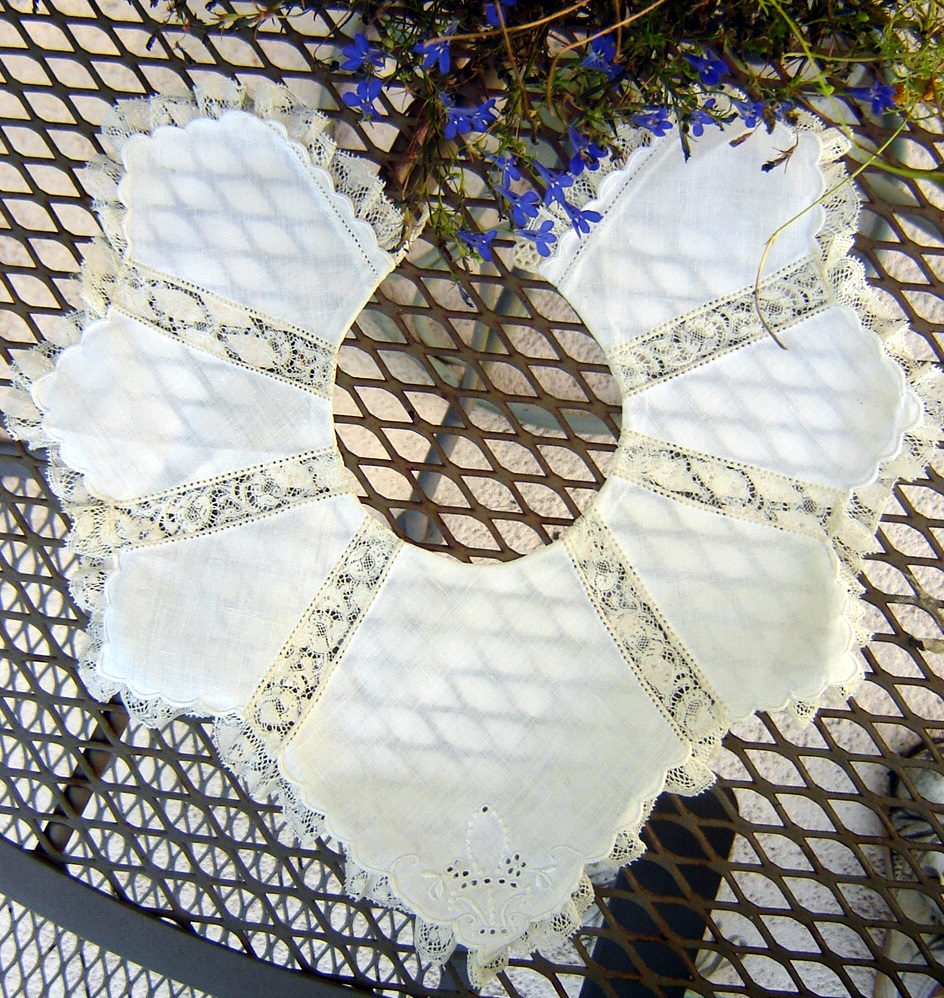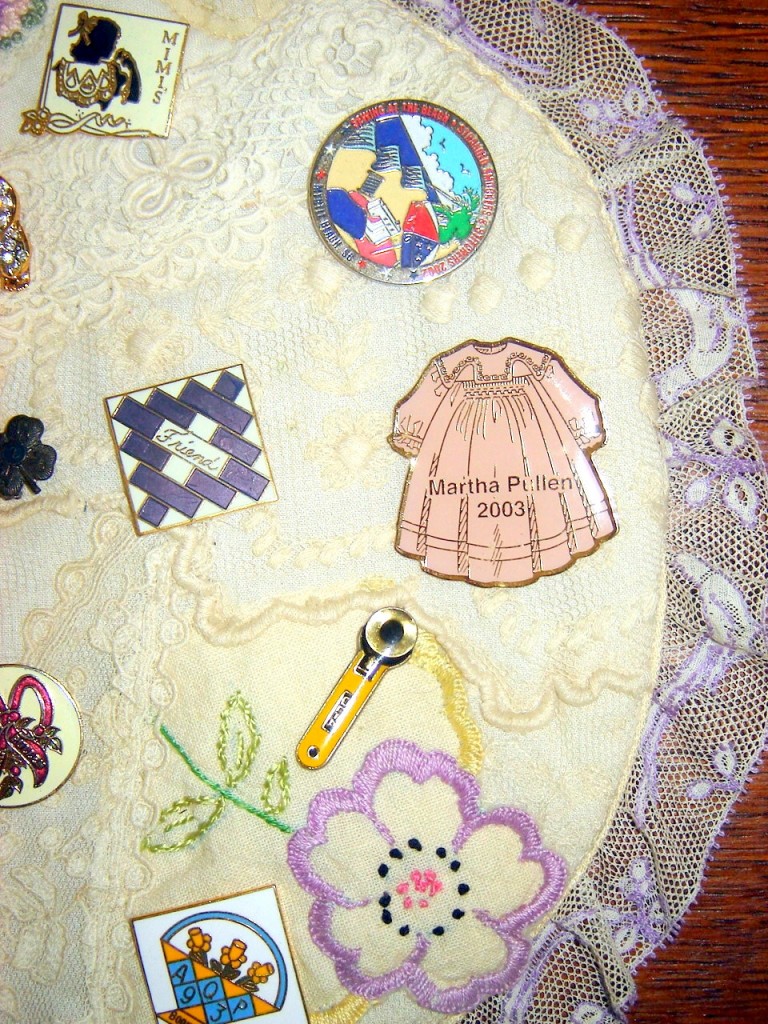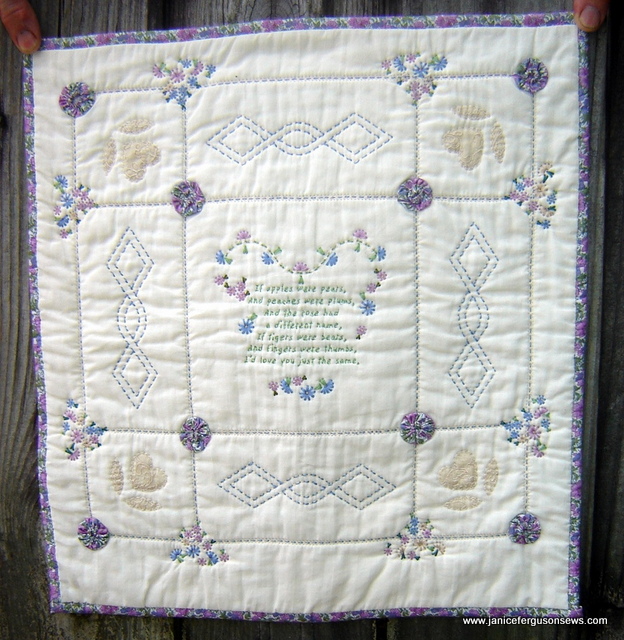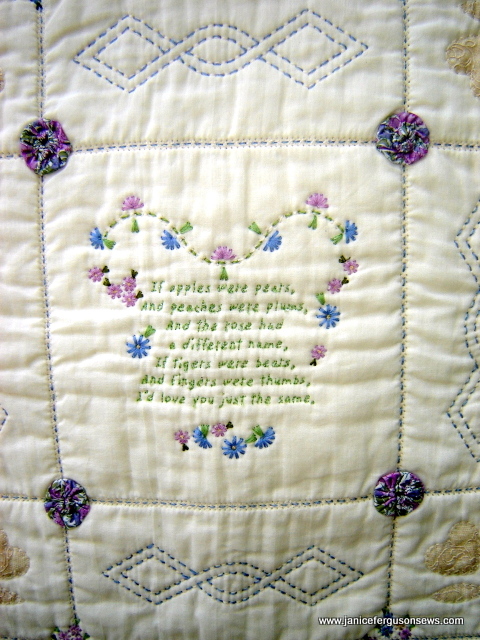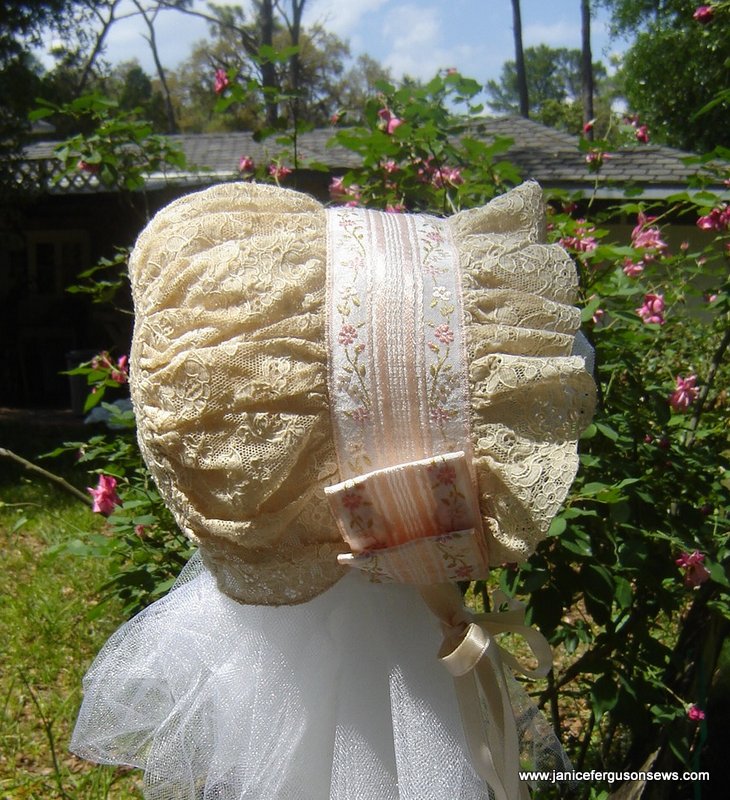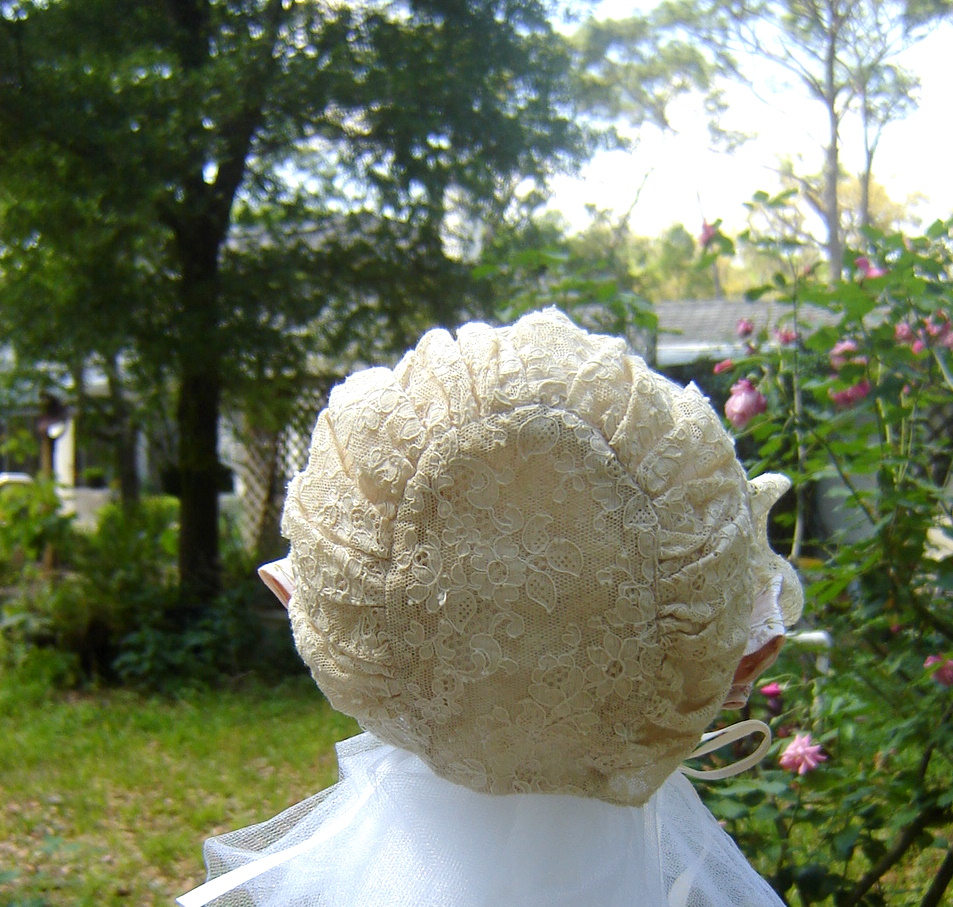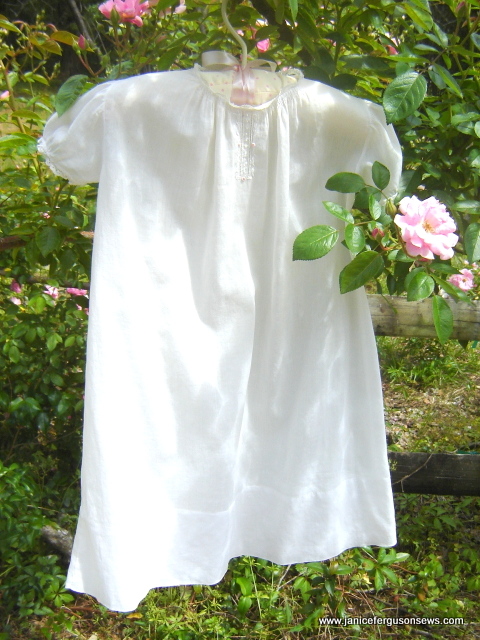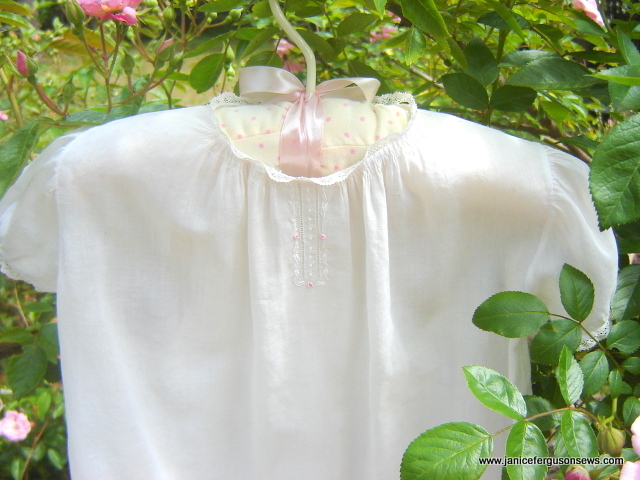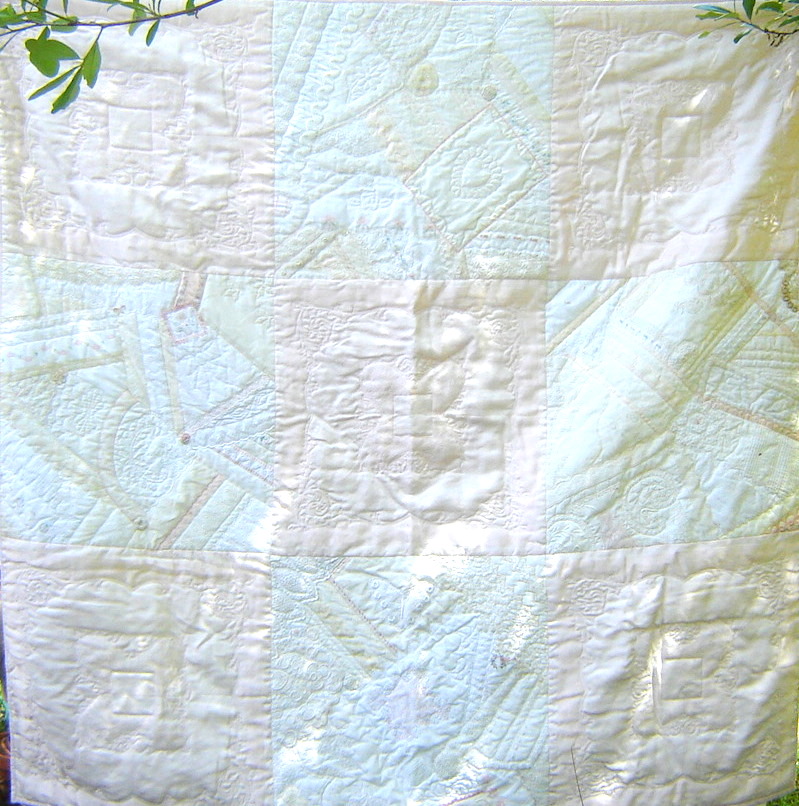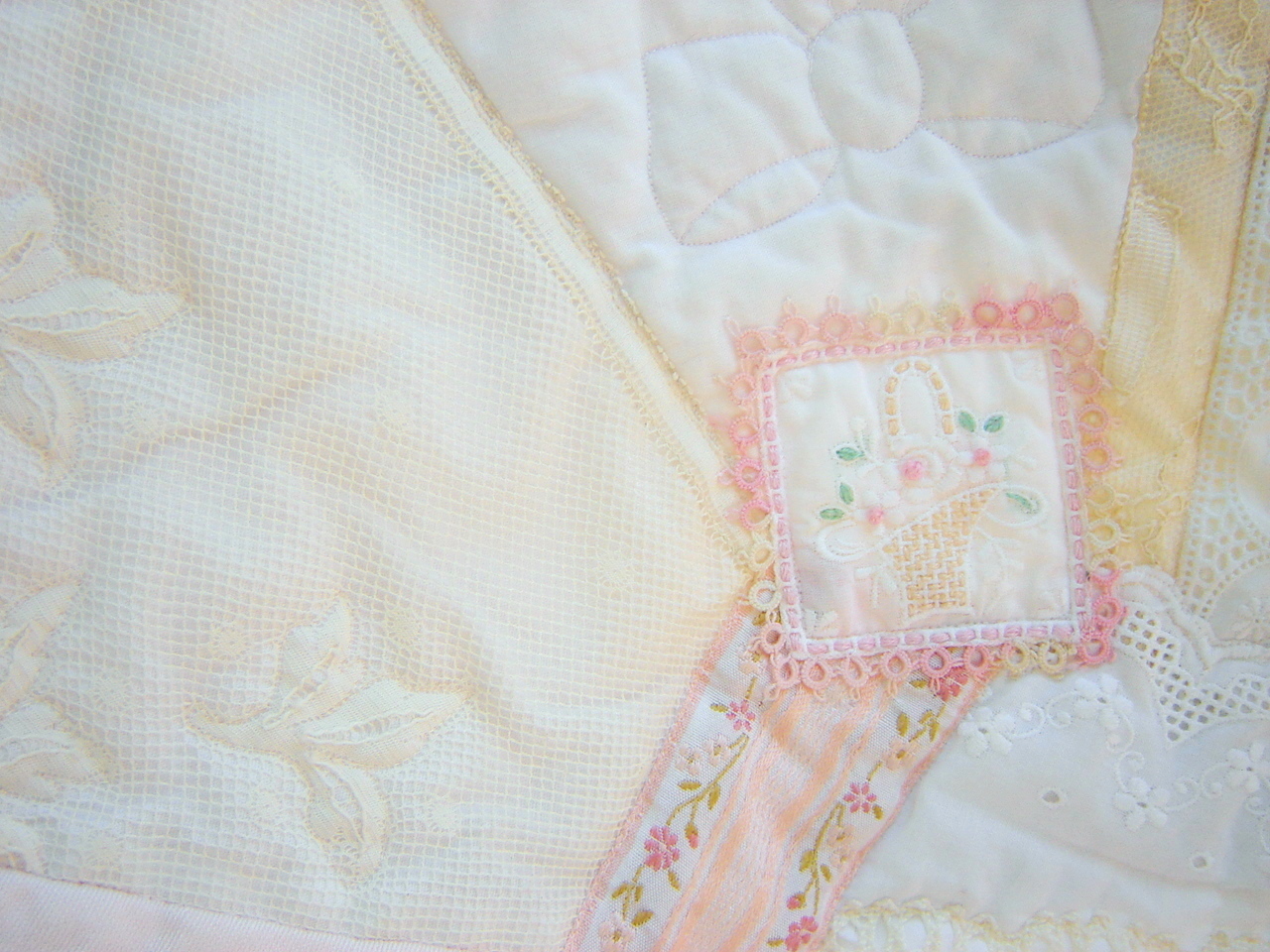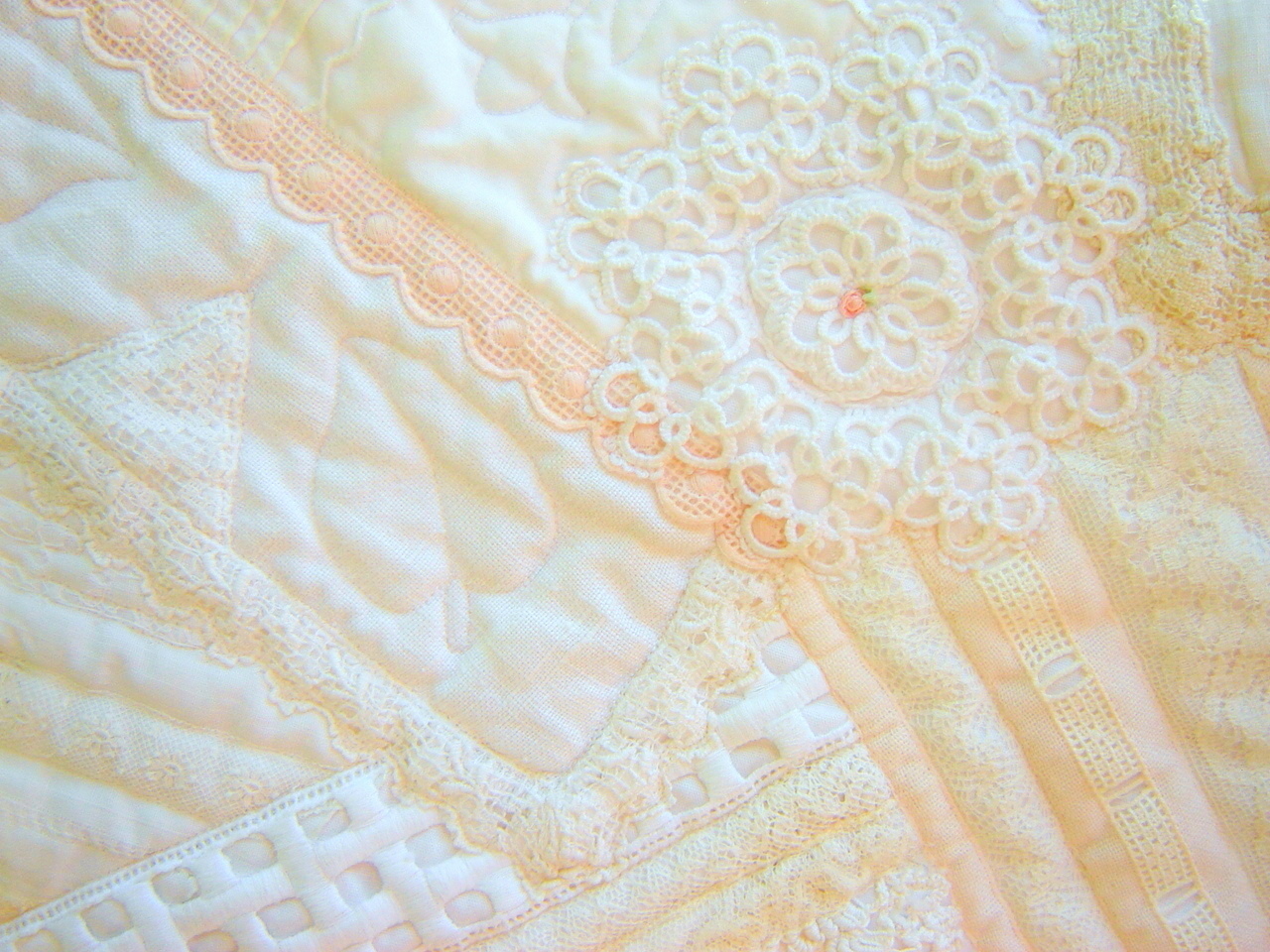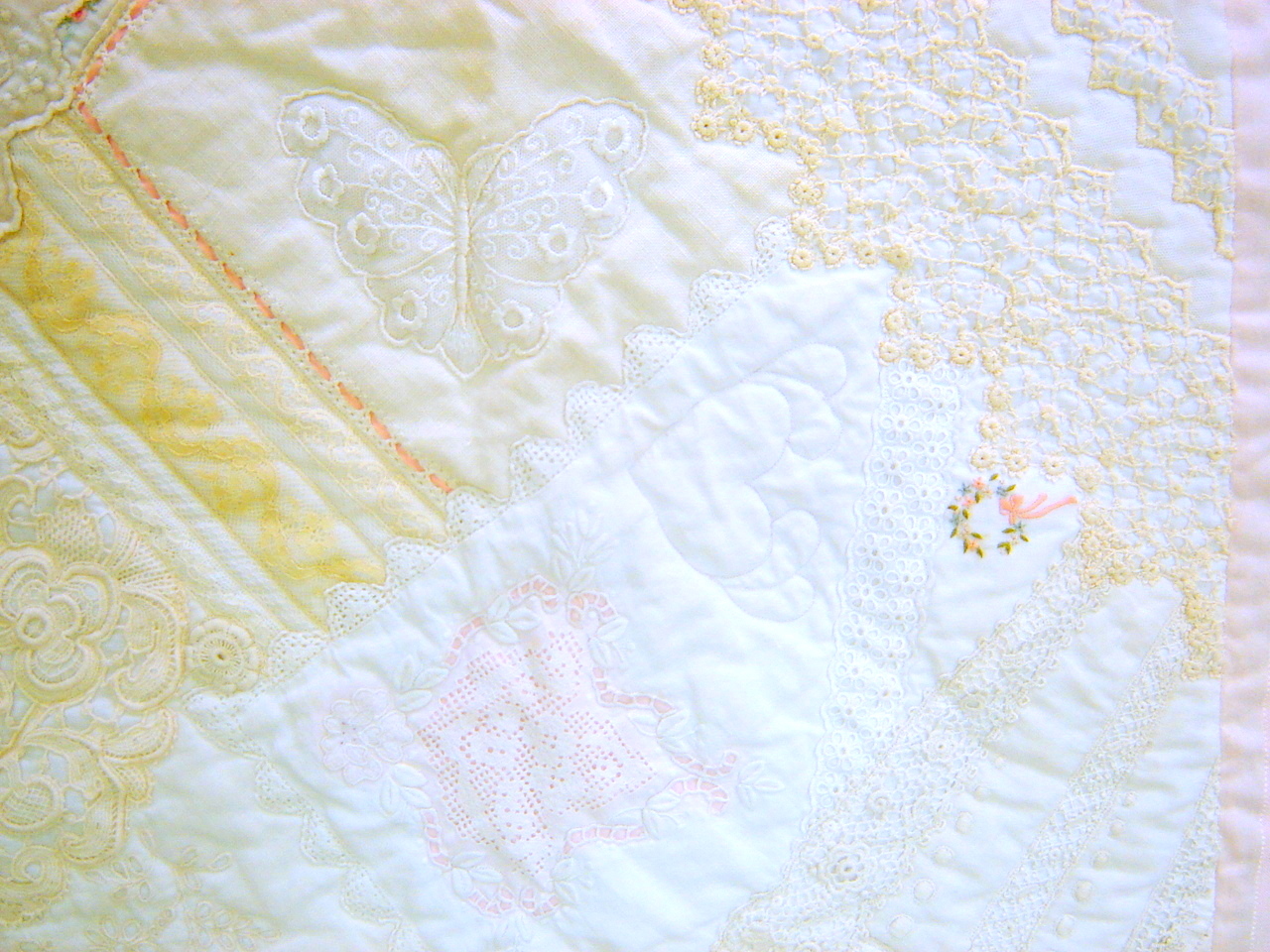This brownish pink “biscuit” colored lace has always appealed to me. I know nothing about the history of biscuit lace, but I want to believe that it was popular in the Victorian era, a time of lavish display, a time when “too much is seldom enough.” NOTE: This was labelled as the decorating style of a woman whose home was featured in one of my favorite  books,  Make Room for Quilts by Nancy J. Martin.
With as little as 20″ of lace 5″ wide, you can make a similar newborn size bonnet using the technique of ruching.   Given that a newborn measures approximately 12″ from ear lobe to ear lobe, any length beyond that can be ruched (gathered) for some fullness and transformed to a bonnet.
For the horseshoe crown, another 5″ of lace is needed. It is customarily lined, enclosing the gathers of the body of the bonnet between the lining and the back. But if there is a shortage of lace, the lining could be made of cotton netting.
Two pieces if lace have been used to create this luscious bonnet. The bonnet body is a very intricate 5″ wide lace galoon,  27″ long. A second lace, a 2″ edging, was machine stitched to the wrong side of the galoon, leaving 1″ of the edging exposed. After the two straight pieces of lace were joined together, three rows of gathering threads were stitched, a scant 1/2″ apart, beginning at the stitching that joined the two laces together. The gathering threads were then drawn up to 12″ and tied off. Continue reading

